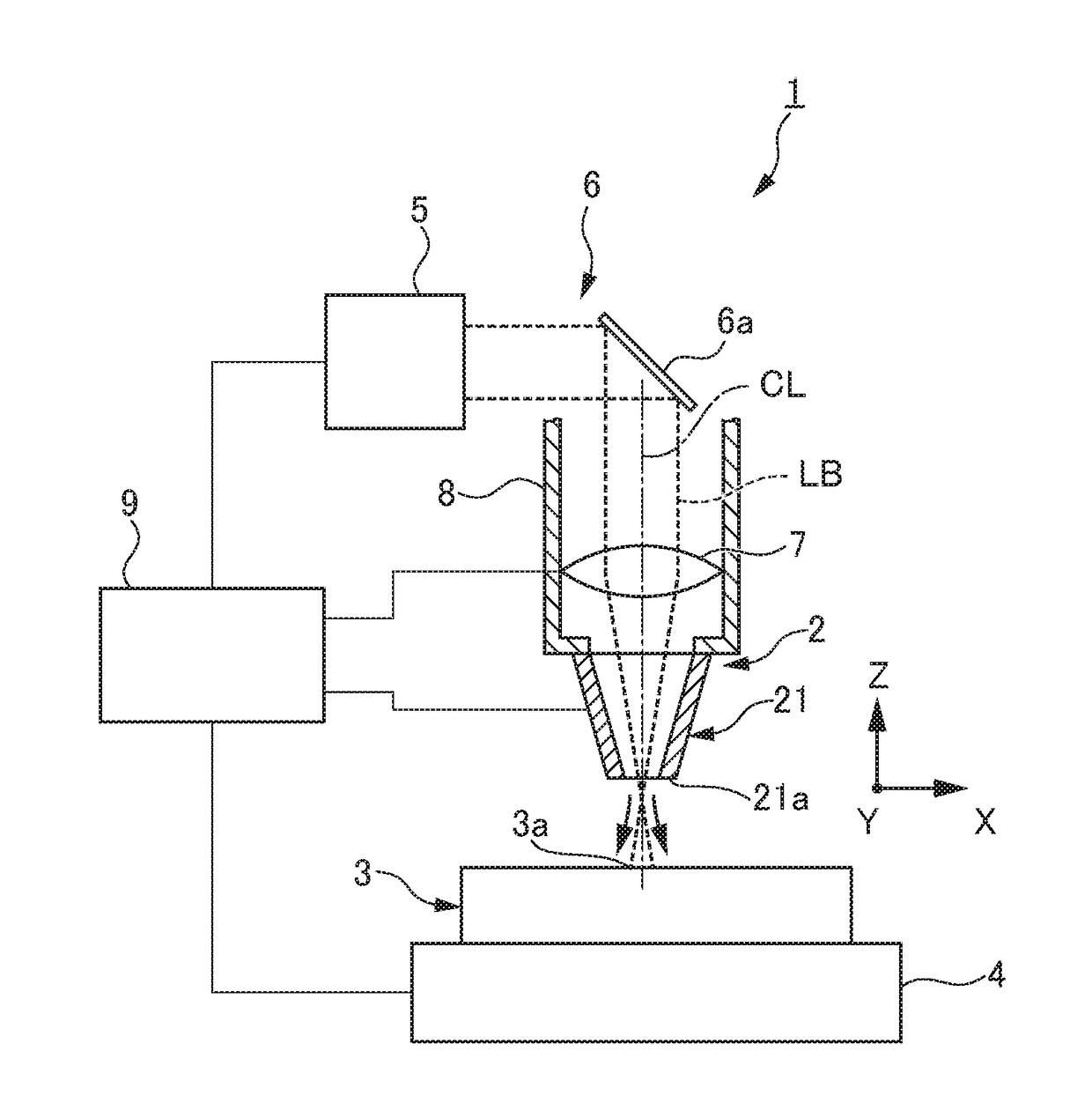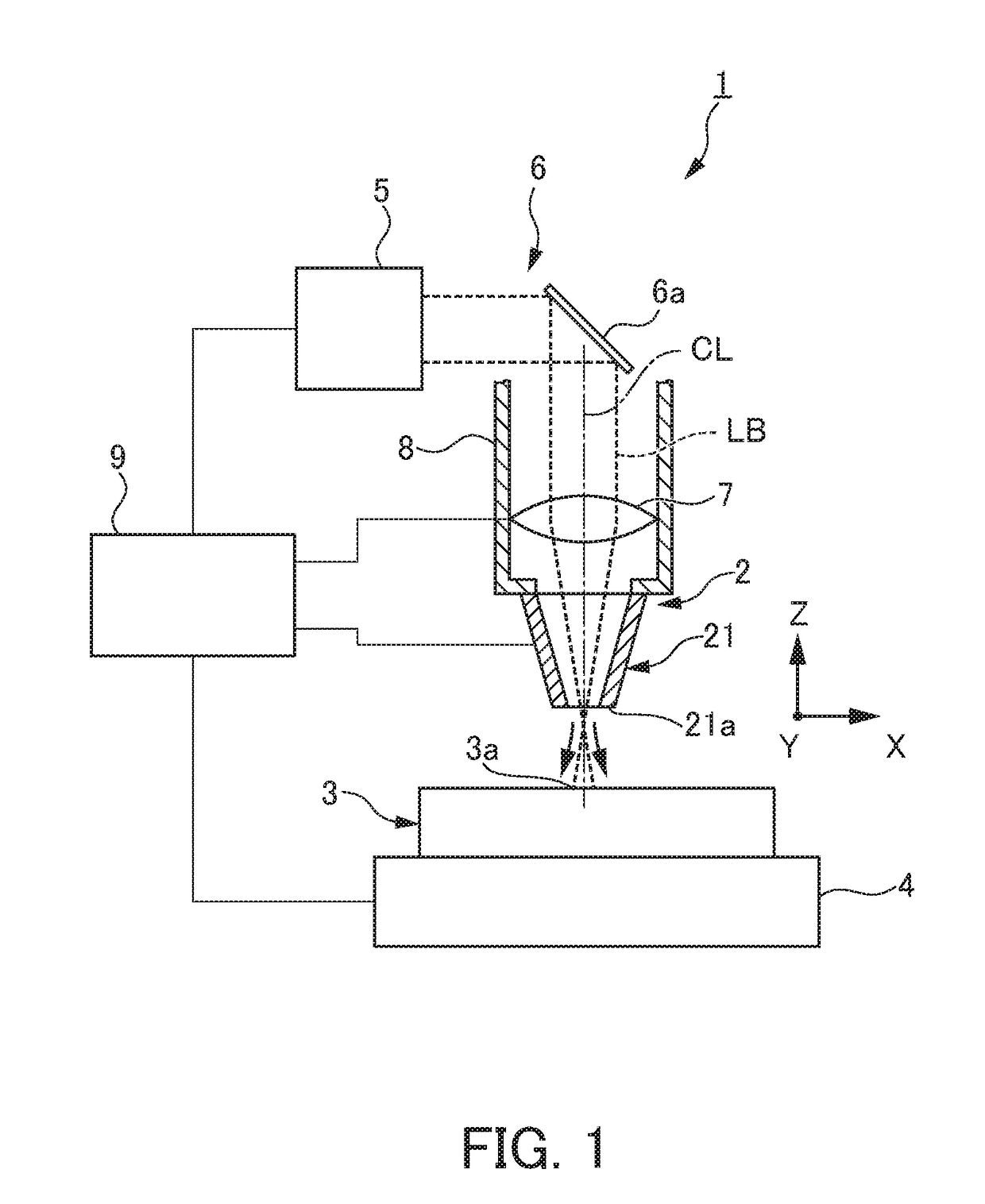Laser machine
a laser machine and nozzle tip technology, applied in metal-working equipment, welding equipment, manufacturing tools, etc., can solve the problems of reducing the degree of enclosure of the nozzle tip body, reducing the drilling time, and reducing the difficulty of removing melted materials
- Summary
- Abstract
- Description
- Claims
- Application Information
AI Technical Summary
Benefits of technology
Problems solved by technology
Method used
Image
Examples
first embodiment
[Modification of First Embodiment]
[0043]FIG. 3 is a vertical cross section view showing the nozzle of a laser machine according to a modification of a first embodiment. FIG. 4 is a horizontal cross section view showing the nozzle of the laser machine according to the modification of the first embodiment.
[0044]The laser machine 1 according to this modification of the first embodiment has a different configuration of the nozzle 2 from that of the first embodiment described above, as follows. Other configurations are basically similar to those of the first embodiment described above. Thus, the same members are added with the same numerals, and description thereof is omitted.
[0045]As shown in FIG. 3 and FIG. 4, in the nozzle 2 of this laser machine 1, an airflow generator 15 that generates a helical rising airflow in the inside of the nozzle tip body 21 is attached to the nozzle tip body 21. This airflow generator 15 is composed of a first gas path 15a that sends air substantially horiz...
PUM
| Property | Measurement | Unit |
|---|---|---|
| thickness | aaaaa | aaaaa |
| core diameter | aaaaa | aaaaa |
| length L2 | aaaaa | aaaaa |
Abstract
Description
Claims
Application Information
 Login to View More
Login to View More - R&D
- Intellectual Property
- Life Sciences
- Materials
- Tech Scout
- Unparalleled Data Quality
- Higher Quality Content
- 60% Fewer Hallucinations
Browse by: Latest US Patents, China's latest patents, Technical Efficacy Thesaurus, Application Domain, Technology Topic, Popular Technical Reports.
© 2025 PatSnap. All rights reserved.Legal|Privacy policy|Modern Slavery Act Transparency Statement|Sitemap|About US| Contact US: help@patsnap.com



